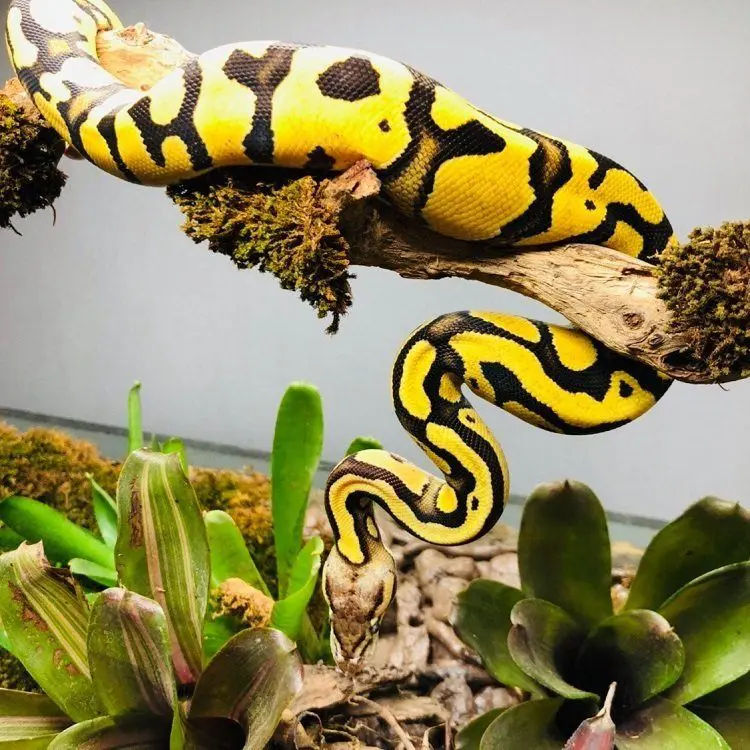When you first bring your ball python home, you may think that your pet will remain on its substrate, hide in the hiding places you have provided and strike its food with vigor.
Many new ball python owners are worried or even shocked to find their snake climbing. Note that ball pythons have been known to climb up the side of their glass enclosures and escape out of the top, so always ensure your screen top is securely fastened.
Do Ball Pythons Climb In The Wild?
Climbing is a natural instinct in ball pythons, who love to climb. In the wild, they can be found on the ground, but will often climb into trees to hide in the branches for privacy and safety during daylight hours.
Should I Provide Climbing Accessories In Captivity?
Due to the fact that pythons enjoy climbing in the wild and it’s a natural instinct, you are going to want to provide some branches for your pet to climb in its enclosure.
These reptiles are excellent climbers and it’s believed that more of the ball python population lives in trees, preying on birds.

Males tend to climb more than females. Females will climb when they are younger, they will climb as much as males. When the female becomes bigger and heavier, she will climb less.
Providing things to climb on in the enclosure stimulates your pet and encourages it to exercise and live as it could in the wild. Branches are not only aesthetically pleasing for you to see when you watch your pet, but it helps stimulate your pet mentally.
Important Safety Tip
If your python enjoys climbing, it also stands the risk of falling and injuring itself. Remember any injuries can quickly develop into infections, which will require veterinary treatment.
Prevent the risk of falls by selecting strong branches, which are not likely to break under the weight of your pet. The branches must be firmly placed to reduce the risk of them falling as your pet climbs.
Why Is My Ball Python Climbing
Some ball pythons display signs that they are constantly trying to escape, climbing up the side of their enclosures. If left unmonitored, it’s not uncommon for these pets to escape if you accidentally leave their enclosure lid open.
Feeding Times
As your baby ball python grows up in your home, it develops behaviors based on a number of factors, including learning your daily routine.
If you feed to a specific feeding schedule, your pet will soon learn the schedule and will exhibit behaviors, such as climbing the sides of the enclosure to let you know it’s hungry. They are very smart pets and it’s their way of telling you it’s feeding day or feeding time.
Incorrect Temperatures
Ball pythons, as with any reptile, rely on the temperatures you provide to maintain optimum health and happiness. They will move throughout the enclosure to regulate their body temperatures.
When your temperatures are not high enough, your pet may climb to the top of the enclosure to get as close to the basking lamp to get the warmth that they need.
Monitor the temperature within the enclosure regularly using a digital thermometer with a remote probe. The probe can be placed in the enclosure where you want to monitor the temperatures.
Ideal ball python temperatures are:
- Basking area – 88ºF to 92ºF
- Warm side – 80º to 85ºF
- Cool side – 75ºF to 80ºF
Summary
Climbing in ball pythons may be nothing to worry about, it’s a normal behavior in the wild.
Monitor the enclosure temperatures on a regular basis to ensure you keep them at optimum, while you get to know your pet.
Climbing the sides of the enclosure is also a way your pet communicates with you, once it gets to know its feeding schedule.
Provide strong branches to give your pet the mental and physical stimulation it needs, encouraging it to explore the whole enclosure, giving your pet more space to move.